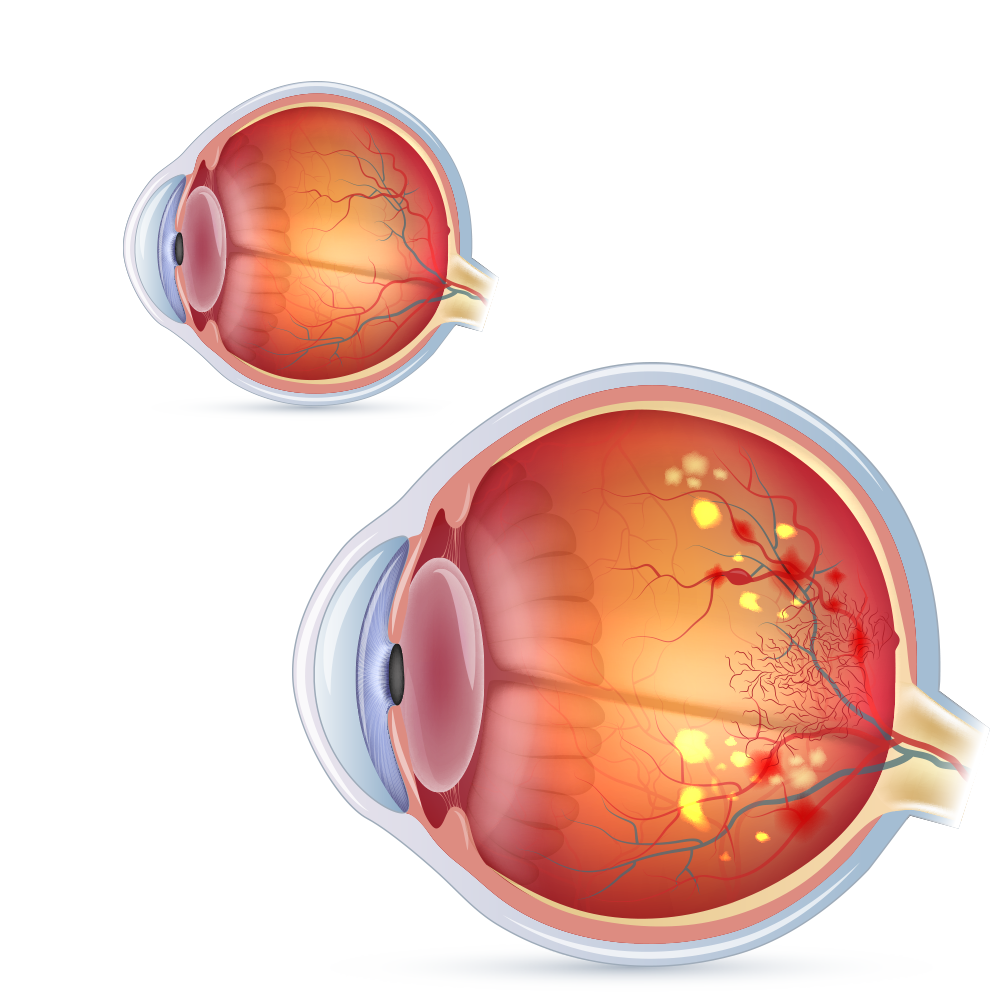

What is diabetes?
Diabetes is a condition where the body fails to properly regulate blood sugar levels. Sustained high sugar levels can cause damage to many parts of the body including the eyes, nerves, brain, kidney, heart and blood supply to peripheral limbs.
What are the symptoms?
Diabetes can cause transient blurring of vision. As the sugar level in the blood fluctuates it can change the ability of the lens to bend light, changing its focus.
Over time, the lens of the eye can become cloudy resulting in a cataract. Cataracts are amenable to surgery usually with a positive outcome.
Prolonged high sugar levels can damage blood vessels in the retina. This can cause them to become leaky resulting in retinal swelling (oedema). Blood vessels can also close off resulting in loss of blood flow with low oxygen levels in the tissue (ischaemia). The retina will try and compensate for this by growing new blood vessels. These blood vessels are often very fragile and can break easily leading to bleeding in the jelly of the eye.
How can it be prevented?
The best way to avoid diabetic eye complications is to maintain control of risk factors. This includes maintaining optimum blood sugar levels through good diet and medication, controlling blood pressure and lipids, avoiding smoking, weight control and exercise etc.
Regular eye screening by your eye care professional will pick up early disease and its complications. If treatment is needed, it may require a combination of laser and/or intravitreal injections and in some cases surgery.


